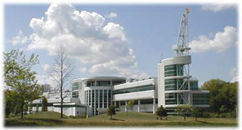Whiteface Mountain Summit Conditions
- Temperature
- Relative Humidity
- Barometric Pressure
- Wind Speed
- Wind Intensity
- Wind Direction
Wintertime icing can affect wind, temperature, and humidity measurements. Ice is removed from sensors on a weekly basis, but the raw data presented here has not been quality controlled.
News! News! News!
- Summer Lecture Series Announced!
- "How New York Lost its Marble"
(May-June 2015 Issue of Skiing History)
Contact Us
- Atmospheric Sciences Research Center
Whiteface Mtn Field Station
110 Marble Mountain Lane
Wilmington, NY 12997
518-946-2142
- Paul Casson
Site Manager
pcasson(at)albany(dot)edu
518-946-2143
- Richard Brandt
Science Manager
rbrandt(at)albany(dot)edu
518-946-2155
The ASRC Whiteface Mountain Field Station |
|
|
Yesterday´s Time Lapse Video (View full screen to see timestamp) |
Today´s Time Lapse Video (View full screen to see timestamp) |
View Up-To-Date weather data feed from summit of Whiteface Mountain!
(May take several seconds to load)
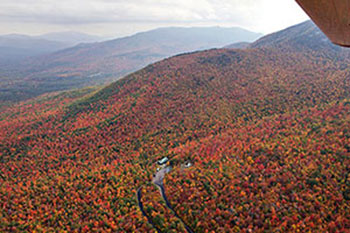 Perched high atop an iconic summit of the Adirondack Mountains, nestled among the
krummholz and alpine tundra, and carved from the granite of the mountain itself,
is a historically unique and state-of-the-art scientific research station. Known
to locals as the Whiteface Observatory, the Atmospheric Sciences Research Center´s
(ASRC) Whiteface Mountain Field Station was established on February 16, 1961 by
the State University of New York as a University-wide center to promote and
encourage programs in basic and applied sciences related to the atmosphere.
Perched high atop an iconic summit of the Adirondack Mountains, nestled among the
krummholz and alpine tundra, and carved from the granite of the mountain itself,
is a historically unique and state-of-the-art scientific research station. Known
to locals as the Whiteface Observatory, the Atmospheric Sciences Research Center´s
(ASRC) Whiteface Mountain Field Station was established on February 16, 1961 by
the State University of New York as a University-wide center to promote and
encourage programs in basic and applied sciences related to the atmosphere.Located high in the clouds, the mission of the research at ASRC´s Whiteface Observatory is to enhance our fundamental understanding of the chemical and physical nature of the atmosphere, and to apply that knowledge to study the interaction of chemical, physical, geological, and biological processes impacting our environment.
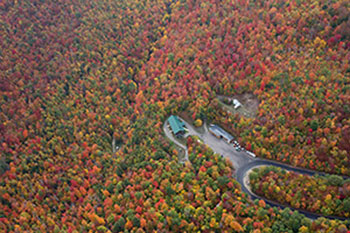 At 1,500 m above sea
level, where air masses approaching from the west first encounter the highlands of New
York and New England, there is no other site in the Adirondacks that offers researchers
the opportunity to directly study these air masses that shape our weather and that
transport the pollutants which result in acid rain.
At 1,500 m above sea
level, where air masses approaching from the west first encounter the highlands of New
York and New England, there is no other site in the Adirondacks that offers researchers
the opportunity to directly study these air masses that shape our weather and that
transport the pollutants which result in acid rain.Two scientific research facilities, comprising the Whiteface Mountain Field Station, serve the ASRC in fulfilling its mission. The main facility at the Marble Mountain Lodge (110 Marble Mountain Lane, Town of Wilmington, NY) is perched on the shoulder of the Whiteface massif at an elevation of 604 m. The Lodge has a large lecture hall as well as office and research laboratory space. An annex building houses dry and wet laboratories, offices, and storage facilities for refrigerated and frozen samples.
At the Marble Mountain Lodge, ASRC researchers sample the chemical content of the atmosphere, including pollutants and particulates, and continuously monitor weather conditions. Precipitation is also measured as part of the National Atmospheric Deposition Program. In October of 2012, a flow tower and passive Ammonia sampler were added to estimate dry deposition as part of the Environmental Protection Agency´s secondary standard pilot program.
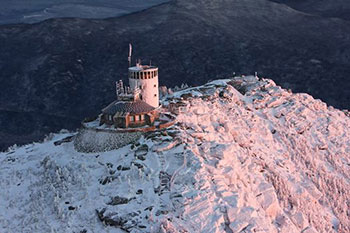 Atmospheric trace gases, particulates, and meteorological measurements are
made at a monitoring site located 30 m above the lodge. Monitored gases include carbon
monoxide (CO), sulfur dioxide (SO2), ozone (O3), and nitrous oxides (NOx). Condensed
phase pollutants measured include sulfates and nitrates that result in acid rain, as well
as black carbon, which provides a measure of smoke and combustion-related particulates in
the air. Overall these measurements at the Lodge, located at a relatively low elevation
on the mountainside, represent conditions experienced by most of the ecosystems and
communities in the Adirondacks.
Atmospheric trace gases, particulates, and meteorological measurements are
made at a monitoring site located 30 m above the lodge. Monitored gases include carbon
monoxide (CO), sulfur dioxide (SO2), ozone (O3), and nitrous oxides (NOx). Condensed
phase pollutants measured include sulfates and nitrates that result in acid rain, as well
as black carbon, which provides a measure of smoke and combustion-related particulates in
the air. Overall these measurements at the Lodge, located at a relatively low elevation
on the mountainside, represent conditions experienced by most of the ecosystems and
communities in the Adirondacks. 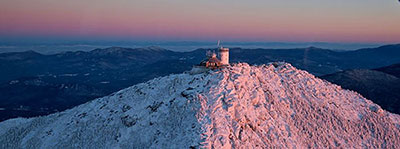 By contrast and by design, the Whiteface Mountain Field Station makes many of the
same measurements and weather observations, but is situated at 1,483 m (4867 ft.) in
elevation. The silo-shaped observatory is three stories tall and features an observation
deck that was recently enclosed as part of a comprehensive renovation project in 2012.
The summit and observatory have paved road access to within 92 m of the summit via the
Veterans Memorial Highway, AC power, and fiber-optic internet service.
By contrast and by design, the Whiteface Mountain Field Station makes many of the
same measurements and weather observations, but is situated at 1,483 m (4867 ft.) in
elevation. The silo-shaped observatory is three stories tall and features an observation
deck that was recently enclosed as part of a comprehensive renovation project in 2012.
The summit and observatory have paved road access to within 92 m of the summit via the
Veterans Memorial Highway, AC power, and fiber-optic internet service.

